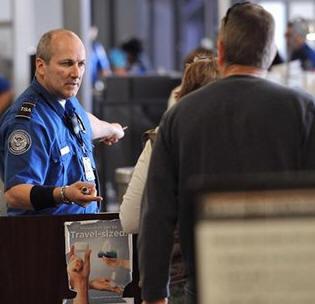|
|||||||||||
|
|
|
|||
|
By Eddy Metcalf |
||||
 |
May 25, 2010 - The Transportation Security Administration (TSA) which protects the nation's transportation systems to ensure freedom of movement for people and commerce deployed Screening of Passengers by Observation Techniques (SPOT) program nationwide without first validating the scientific basis for identifying suspicious passengers in an airport environment. TSA began initial testing in October 2003 of its Screening of Passengers by Observation Techniques program. Government Accountability Office (GAO) which is "the investigative arm of Congress" and "the congressional watchdog" has been asked to review the SPOT program. That is to determine to the extent to which TSA validated the SPOT program before deployment, implementation challenges, and the extent to which TSA measures SPOT's effect on aviation security. Behavior Detection Officers (BDO) carries out SPOT's mission to identify persons who pose a risk to aviation security by focusing on behavioral and appearance indicators. |
|||
|
|
||||
|
The GAO has analyzed TSA documents, such as strategic plans and operating procedures; interviewed agency personnel and subject matter experts; and visited 15 SPOT airports, among other things. Although the results from these visits are not generalizable, they provided insights into SPOT operations. The Department of Homeland Security (DHS) is in the process of validating some aspects of the SPOT program. “A scientific consensus does not exist on whether behavior detection principles can be reliably used for counterterrorism purposes” according to the National Research Council of the National Academy of Sciences. According to TSA, no other large-scale security screening program based on behavioral indicators has ever been rigorously scientifically validated. DHS plans to review aspects of SPOT, such as whether the program is more effective at identifying threats than random screening. Nonetheless, DHS's current plan to assess SPOT is not designed to fully validate whether behavior detection can be used to reliably identify individuals in an airport environment who pose a security risk. For example, factors such as the length of time BDOs can observe passengers without becoming fatigued are not part of the plan and could provide additional information on the extent to which SPOT can be effectively implemented. |
||||
|
Prior GAO work has found that independent expert review panels can provide comprehensive, objective reviews of complex issues. Use of such a panel to review DHS's methodology could help ensure a rigorous, scientific validation of SPOT, helping provide more assurance that SPOT is fulfilling its mission to strengthen aviation security. TSA is experiencing implementation challenges, including not fully utilizing the resources it has available to systematically collect and analyze the information obtained by BDOs on passengers who may pose a threat to the aviation system.
TSA's
Further, most BDOs
lack a mechanism to input data on suspicious passengers into a database
used by TSA analysts and also lack a means to obtain information from
the |
| Other News Stories |
|
|
| ©AvStop
Online Magazine
Contact
Us
Return To News
|
|


